This article was co-authored by Anthony Stark, EMR. Anthony Stark is a certified EMR (Emergency Medical Responder) in British Columbia, Canada. With over 11 years of experience, he has worked as an industrial medic and provided urban and rural paramedic services. He currently works for Mountain View Safety Services and previously worked for the British Columbia Ambulance Service. Anthony has a Bachelor of Engineering in Electrical, Electronics, and Communications Engineering from the Georgia Institute of Technology. He has completed the EMP Canada EMT Course and Swiftwater Awareness Training associated with the British Columbia Ambulance Service.
wikiHow marks an article as reader-approved once it receives enough positive feedback. This article received 24 testimonials and 85% of readers who voted found it helpful, earning it our reader-approved status.
This article has been viewed 5,791,368 times.
Splinters are often small, but they can still be quite painful. Splinters can also be difficult to remove. If a splinter is large or severe enough, then you may need to seek medical attention to have it removed. However, if you just have a small splinter that is causing you pain and frustration, then there are some different strategies you can use to remove your splinter and to care for the wound as well.
Things You Should Know
- Wash off the injured area and remove the splinter with a pair of sterilized tweezers. For more fragile splinters (like fiberglass), use a piece of tape instead.
- Alternatively, pour white school glue on the splinter and let it dry. Then, peel away the dried glue to get rid of the splinter.
- Squeeze the splinter wound delicately until you see drops of blood. Then, disinfect and bandage the wound so it doesn't get infected.
- Visit a doctor if your splinter is severe, or if the splinter is in a delicate area, like the eye.
Steps
Tweezer Removal
-
1Wash the affected area. Before you begin removing a splinter,wash your hands and the skin around the splinter with warm water and soap.This can minimize the risk of spreading bacteria that may cause an infection.[1]
- You can wash your hands with mild soap and some warm water for 20 seconds.[2]
- You can wash the affected area with mild soap and water or use an antibacterial wash.
- Dry your hands and the area around the splinter well before you try to remove it.
-
2Sterilize your tweezers with alcohol. Before you use your tweezers, make sure that you disinfect them with rubbing alcohol toreduce your risk of infectionor any bacteria that can spread inside the wound. Having bacteria in the wound can cause an infection.[3]
Ways to Sterilize Tweezers
Rubbing alcohol: Let the tweezers sit in a bowl or cup of rubbing alcohol for a few minutes, or use a sterile cotton ball to wipe the tweezers with rubbing alcohol. You can get rubbing alcohol at pharmacies and many medical supply stores. Grocery stores and large retailers also sell rubbing alcohol.
Heat: If you’re short on time, but need to quickly sterilize your tweezers, hold the tip of the tweezers (the part that’s going to touch the injury) over an open flame. If your tweezers are metal, use another instrument to suspend them over the flame so you don’t burn yourself.
Boiling water: If your tweezers aren’t made of metal and they will likely melt under a flame, place them in a pot of boiling water for 20 minutes.Advertisement -
3Use a magnifying glass and good lighting. Consider using a magnifying glass when removing the splinter. This may help you see the splinter more clearly and reduce the risk of injuring your skin further.[4]
- At the least, make sure that you remove the splinter in a well-lit area to help you see it better.
-
4Break and lift the skin over the splinter if necessary. If the splinter is covered by a flap of skin, then you canuse a sterilized needle to break the skin and lift the flap.Sterilize a needle by soaking or wiping it with rubbing alcohol. Then, use the needle to break and lift the skin flap that rests over the splinter. This will make it easier for you to grab the splinter and remove it.[5]
- If you have to dig deep to break the skin or see the splinter, consider going to the hospital or your doctor to reduce your risk of injury.
-
5Grasp the splinter with tweezers. Once you’ve exposed the splinter’s tip, grasp it near the surface of your skin with your tweezers.Gently pull out the splinter in the direction that it entered your skin.[6]
- If you have to dig deeper with your tweezers to get at the splinter, you may want to see your doctor to remove it.
- If part of the splinter breaks off, you may need to either see a doctor or try re-grasping it with your tweezers.
Tape Removal
-
1Get some tape. Fragile splinters, such as those from plants or fiberglass, often respond well to removal with tape. You can use many different types of tape for this procedure including masking tape, duct tape, or electrical tape. You will only need a small piece of tape.
- Make sure that the area around the splinter is clean and drybefore you apply the tape.
- Wash and dry your hands before you get started as well.
- Make sure that the
-
2Place a piece of tape over your splinter. Apply the tape to the splinter site and press it firmly to make it stick to the splinter. Make sure that you do not press the splinter deeper into your skin as you do this.Apply pressure out and away from the entry point of the splinter.
-
3Pull off the tape. After you are sure that the tape is making contact with the splinter, pull off the tape. Peel away the tape slowly in the same direction that the splinter entered your skin. As you pull on the tape, the splinter should stick to the tape and come out.
-
4Check the tape. After you have removed the tape, check it to see if the splinter is stuck to it. You should also check your skin to see if any part of the splinter is still embedded in your skin. If you still have all or part of the splinter, then you can repeat this process or try a different method.
Glue Removal
-
1Apply glue to the splinter. You can also use glue, such as white school glue, to remove a splinter. Just apply a layer of glue to the splinter and surrounding area.[7] Make sure that the glue is thick enough to fully cover the splinter.
- Do not use instant glue. This may not come off of your skin and trap the splinter in your skin instead of removing it.
- You can also try using a wax hair remover or wax strips the same way that you would use glue.
- Wash and dry your hands and the area around your splinter before you begin.
-
2Allow the glue dry. The glue must dry completely before you can remove it or it may not stick to the splinter. Leave the glue on your skin for about30 minutes to an hour.Check it now and then to see if it is dry yet. When the glue is dry, it should not feel tacky or wet.
-
3Peel away the glue. After you are certain that the glue is dry, grasp the edge of the glue and pull it in the direction that the splinter entered your skin. Pull slowly and evenly. As you pull at the glue over your splinter, the splinter should come out.
-
4Check for the splinter. After you have peeled away the glue, look at the glue to see if the splinter is stuck in it. You should also check to see if any parts of the splinter are left in your skin. If so, then you may need to repeat the process or try a different splinter removal method.
How to Care for a Splinter Wound
-
1Squeeze the wound gently. When you’ve successfully removed the splinter, gently squeeze it until you see some blood. This will help to get some of the germs from the splinter out of your wound.[8]
- Don’t squeeze too hard. If the wound doesn’t bleed with some gentle pressure, just leave it alone. You can use other methods to clean away germs and bacteria, including an antibacterial ointment.
- Flushing the wound out with warm water for at least a minute will help clean the area.
-
2Control any bleeding. If the splinter continues to bleed after squeezing it or is bleeding on its own, then you can control the bleeding by placing pressure on the area.[9] This can help prevent significant blood loss and shock.[10] Bleeding from a minor wound should stop within a few minutes. If you are bleeding excessively, or the bleeding won’t stop, then seek medical attention right away.
How to Control Bleeding
Using a dressing: Try holding a piece of gauze or a cotton ball on the splinter wound until the bleeding stops.
Holding skin together: If the wound has split the skin, bring the edges of it together by pressing them together with two pieces of sterile gauze or clean cloth.[11]
Elevation: You can also raise the injured area above your heart, which can help to control bleeding.[12] For example, if the splinter was in your finger, then raise your hand above your head until the bleeding stops. -
3Disinfect the area. Wash the splinter wound with soap and warm water after you’ve removed the splinter from your skin. This will help to clean away any lingering bacteria and germs left in the wound. After you are done, you may also want to apply an anti-bacterial ointment.[13]
- Apply an antibacterial ointment to the area up to twice per day.This can minimize the risk of infection to the affected area.[14]
- You can purchase an antibiotic ointment such as bacitracin, neomycin, or polymyxin B. Many brands will put the three into one product and call it “triple antibiotic ointment.”[15]
- Apply an
-
4Bandage the wound. After the bleeding has stopped and the wound is clean, you may want to cover the area to prevent bacteria from getting into the wound. You can secure a piece of gauze with some medical tape or apply a bandage to the injured area. A bandage may also add some pressure to help control bleeding.[16]
When to Get Medical Help
-
1Decide if you should remove your splinter at home or see a doctor. Small splinters that are just under the surface of your skin are safe to remove at home.[17] However, there are some situations where it may be necessary for a medical professional to remove your splinter.
- If you are unsure about the nature of the splinter or it is causing you extreme pain, see your doctor as soon as possible.[18]
- See your doctor for a splinter that is more than a quarter-inch (or half-centimeter) deep, as well as a splinter that is penetrating into muscles or by/on nerves.
-
2See your doctor or get emergency medical help for a severe splinter. If your splinter is deeply embedded, causing severe pain, won’t come out, or even if you are reluctant to remove it yourself, see a doctor as soon as possible. This can help minimize your risk of serious infection or injury. Also see your doctor if:[19]
- The splinter involves the eye.
- The splinter will not come out easily.
- The wound is deep and dirty.
- Your last tetanus shot was more than five years ago.
-
3Watch for signs of infection. If you start to experience any signs of infection from the site on which you removed the splinter, see your doctor immediately. They can prescribe a course of treatment and remove any lingering bits of the splinter that you were not able to see.[20] Signs of an infection include:
Signs of Infection
Drainage from the site
Throbbing at the injury site
Redness or red streaks on the area
Fever or sweating
Muscle spasms
Headache
Muscle stiffness or pain[21] -
4Consider leaving the splinter alone. If your splinter is tiny and not causing any pain, you may just want to leave it in your skin.Your skin may push out the splinter on its own.Your skin may also form a little pimple around the splinter and drain it this way.
- Keep the area clean and watch for signs of infections. If you see any redness, feel heat, or the area becomes painful, see your doctor.
Warnings
- If you do it the wrong way, you can get the splinter deeper in and may need an adult or doctor to get out.⧼thumbs_response⧽
- Make sure to keep the splinter site clean to help minimize the risk of infection.⧼thumbs_response⧽
References
- ↑ http://www.mayoclinic.org/first-aid/first-aid/basics/art-20056604
- ↑ http://www.mayoclinic.org/first-aid/first-aid/basics/art-20056604
- ↑ http://www.mayoclinic.org/first-aid/first-aid/basics/art-20056604
- ↑ http://www.mayoclinic.org/first-aid/first-aid/basics/art-20056604
- ↑ http://www.mayoclinic.org/first-aid/first-aid/basics/art-20056604
- ↑ http://www.mayoclinic.org/first-aid/first-aid/basics/art-20056604
- ↑ http://www.whattoexpect.com/toddler/childhood-injuries/splinters-in-children.aspx
- ↑ http://www.mayoclinic.org/first-aid/first-aid/basics/art-20056604
- ↑ http://www.mayoclinic.org/first-aid/first-aid/basics/art-20056604
- ↑ http://www.mayoclinic.org/first-aid/first-aid/basics/art-20056604
- ↑ http://www.mayoclinic.org/first-aid/first-aid/basics/art-20056604
- ↑ http://www.mayoclinic.org/first-aid/first-aid/basics/art-20056604
- ↑ http://www.mayoclinic.org/first-aid/first-aid/basics/art-20056604
- ↑ http://www.mayoclinic.org/first-aid/first-aid/basics/art-20056604
- ↑ http://www.mayoclinic.org/first-aid/first-aid/basics/art-20056604
- ↑ http://www.mayoclinic.org/first-aid/first-aid/basics/art-20056604
- ↑ http://www.mayoclinic.org/first-aid/first-aid/basics/art-20056604
- ↑ http://www.mayoclinic.org/first-aid/first-aid/basics/art-20056604
- ↑ http://www.mayoclinic.org/first-aid/first-aid/basics/art-20056604
- ↑ http://www.mayoclinic.org/first-aid/first-aid/basics/art-20056604
- ↑ https://www.backpacker.com/skills/healing-thorns-splinters-and-other-pricks
About This Article
If you need to remove a splinter, wash your hands and the skin around the splinter with soap and warm water to reduce the risk of an infection. If the splinter is covered by skin, sterilize a needle and gently break the skin flap to expose the splinter. Once you can see the splinter, grasp it with a pair of sterilized tweezers and gently pull it out in the same direction it entered the skin. However, if the splinter is buried deep, you should visit your doctor to have them extract it. Keep reading for tips from our medical reviewer on how to remove a splinter with tape!

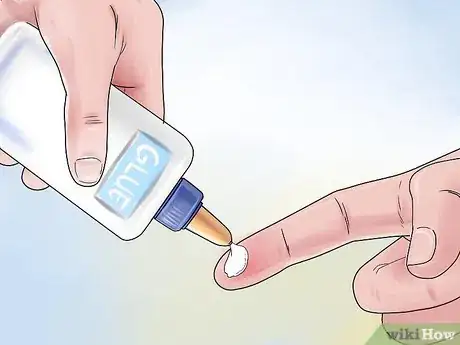



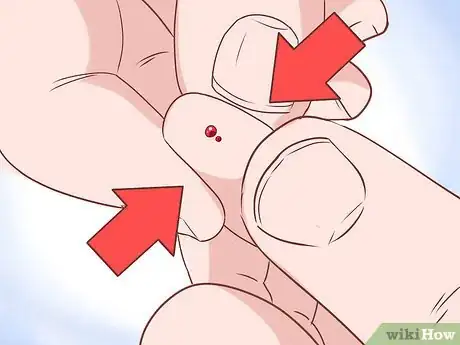

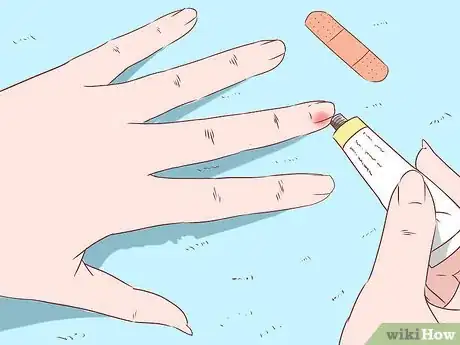
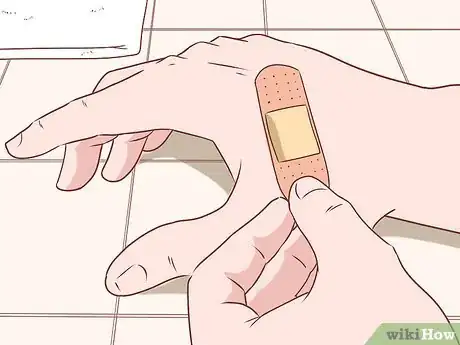
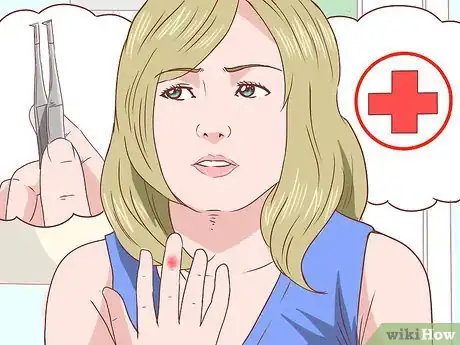

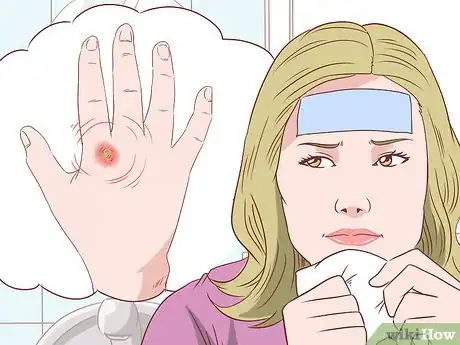

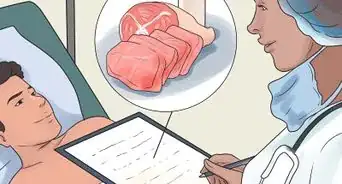
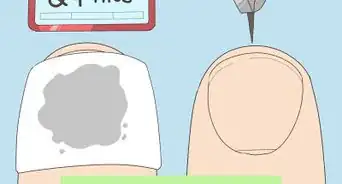

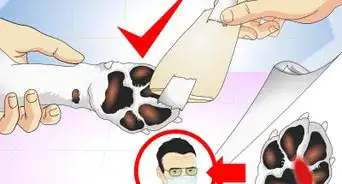
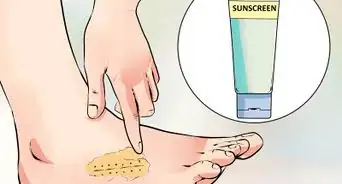

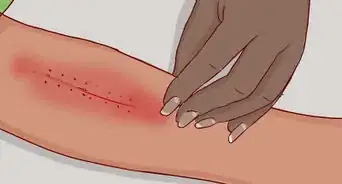

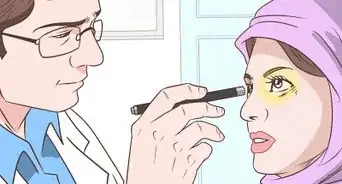

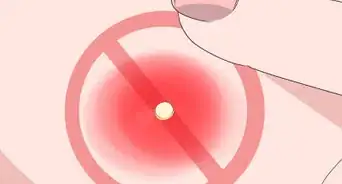
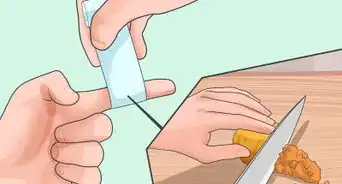










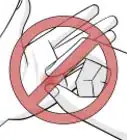

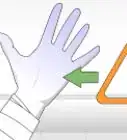
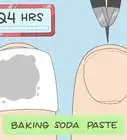



































Medical Disclaimer
The content of this article is not intended to be a substitute for professional medical advice, examination, diagnosis, or treatment. You should always contact your doctor or other qualified healthcare professional before starting, changing, or stopping any kind of health treatment.
Read More...